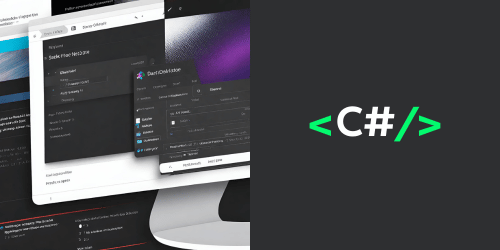Loops are a foundational concept in programming, allowing developers to execute a block of code repeatedly under certain conditions. This capability is essential for tasks that require repetitive actions, such as processing items in a collection, generating sequences of numbers, or simply repeating operations until a specific condition is met. In this blog post, we delve into the basics of loops, exploring their types, uses, and how they empower developers to write efficient and concise code.
The Essence of Loops
At its core, a loop performs a set of instructions repeatedly until a specified condition evaluates to false. The use of loops makes programs more efficient and significantly reduces the amount of code needed for repetitive tasks.
Types of Loops
There are several types of loops, each serving different scenarios in programming:
1. For Loop
The for loop is used when the number of iterations is known before the loop starts. It's particularly useful for iterating over arrays or collections. Its structure typically includes an initialization statement, a condition check, and an increment/decrement statement.
Syntax Example in C#:
for (int i = 0; i < 10; i++)
{
Console.WriteLine(i);
}
2. While Loop
The while loop executes as long as the specified condition is true. It's ideal for scenarios where the number of iterations is not known before the loop starts.
Syntax Example in C#:
int i = 0;
while (i < 10)
{
Console.WriteLine(i);
i++;
}
3. Do-While Loop
Similar to the while loop, the do-while loop executes a block of code at least once and then continues executing it as long as the specified condition is true.
Syntax Example in C#:
int i = 0;
do
{
Console.WriteLine(i);
i++;
} while (i < 10);
4. Foreach Loop
The foreach loop is used to iterate over elements in a collection or an array. It simplifies the syntax for traversing collections by abstracting the iterator variable.
Syntax Example in C#:
string[] names = { "Alice", "Bob", "Charlie" };
foreach (string name in names)
{
Console.WriteLine(name);
}
Best Practices for Using Loops
- Avoid Infinite Loops: Ensure the loop's condition will eventually become false; otherwise, the loop will execute indefinitely, potentially causing the program to crash or become unresponsive.
- Use Appropriate Loop Types: Choose the type of loop that best fits your scenario for clearer and more efficient code.
- Minimize Loop Overhead: Especially in performance-critical applications, keep the code inside the loop as lightweight as possible.
Real-world Applications of Loops
- Data Processing: Loops are instrumental in processing collections of data, such as calculating the sum of numbers in an array or filtering a list of items based on specific criteria.
- User Interactions: They're used in scenarios where a program needs to prompt the user repeatedly, such as menu-driven applications.
- Automating Repetitive Tasks: From batch image processing to generating reports, loops automate tasks that would be tedious and time-consuming to perform manually.
Conclusion
Loops are a crucial element of programming, enabling developers to automate repetitive tasks, process collections of data, and implement logic that requires iteration. By understanding the different types of loops and their appropriate use cases, developers can write more efficient, effective, and readable code. As you continue to explore programming, mastering the concept of loops will undoubtedly enhance your ability to tackle a wide range of coding challenges.

